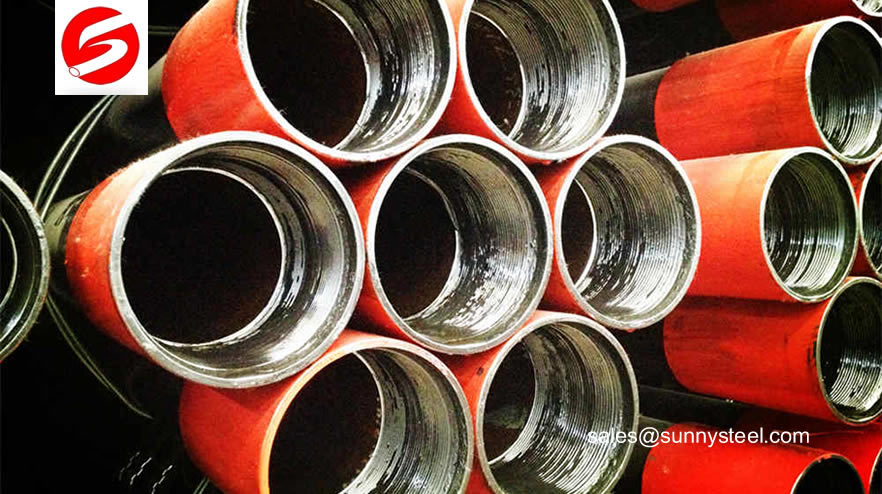- Seamless pipes Specifications and Execution Standard
- ASTM A511/A511M Standard Specification for Mechanical
- ASTM A106 for high temperature service
- ASTM A252-89 Weldedd and seamless pipe piles
- ASTM A556M-88 cold drawn steel heater tubes
- ASTM A519 for several grades of carbon and alloy steel mechanical tubing
- ASTM A213 Standard Specification for Seamless Ferritic and Austenitic Alloy-Steel Boiler, Superheater, and Heat-Exchanger Tubes
ASTM Standards for steel pipes
American Society for Testing and Materials(ASTM), American Society of Mechanical Engineers (ASME)
| Description | Standard | Dimension (mm) | Steel code/ Steel grade |
|---|---|---|---|
| Black and Hot-dipped Zinc-coated Steel Pipes Seamless | ASTM A53 | 0.3-1200 x 1.0-150 | GR.A, GR.B, GR.C |
| Seamless Carbon Steel for High Temperature Service | ASTM A106 | 10.3-1200 x 1.0-150 | GR.B, GR.C |
| Seamless Cold-drawn Low-Carbon Steel Heat-Exchanger and Condenser Tubes | ASTM A179 | 10.3-426 x 1.0-36 | Low Carbon Steel |
| Seamless Carbon Steel Boiler Tubes for High Pressure | ASTM A192 | 10.3-426 x 1.0-36 | Low Carbon Steel |
| Seamless Cold-drawn Intermediate Alloy Steel Heat-exchanger and Condenser Tubes | ASTM A199 | 10.3-426 x 1.0-36 | T5, T22 |
| Seamless Medium-carbon Steel Boiler and Superheater Tubes | ASTM A210 | 10.3-426 x 1.0-36 | A1, C |
| Seamless Ferritic and Austenitic Alloy Steel Boiler, Superheater and Heat-exchanger Tubes | ASTM A213 | 10.3-426 x 1.0-36 | T5, T9, T11, T12, T22, T91 |
| Seamless Carbon and Alloy Steel for Mechanical Tubing | ASTM A333 | 1/4"-42" x SCH20-XXS | Gr1, Gr3, Gr6, Gr8 |
| Seamless Cold-drawn Carbon Steel Feedwater Heater Tubes | ASTM A556 | 10.3-426 x 1.0-36 | A2, B2 |
Conversion from ASTM Standards
Engineering specification is also a language, and standard specifications for material and processes are defined differently in each country in the world. To a new designer, steel grades might seem easy, where 316 stainless steel is one material and cast iron another, but there are variations in each of these categories of metal. Rumors abound about people receiving poor quality steels from other jurisdictions. It leaves some designers wondering if there is something intrinsic in the official standards in other countries that can lead to these complaints.
International standards do not translate, metal-for-metal, the way words might translate. When converting from one standard to another, it’s almost impossible to find identical compositions for a given type of metal. The question becomes: can you find an equivalent? This can be confusing, as each named metal grade has its own chemistry and production guidelines.
For people without a materials background, these differences can make the purchase of foreign-made metal seem iffy, like ordering an inferior knockoff. However, the quality of the grades of steel are as good, country to country. Understanding what makes a steel standard or specification can help a North American business navigate overseas production.
STEEL GRADES EXPLAINED
Metal alloys are a mixture of different proportions of elements. A standard includes the chemistry, or “recipe” for the alloy, documenting what different elements should be melted into it. Specific instructions may also be given on melting temperature, cooling, and treatment.
Published standards also record the mechanical properties of a specified metal. If it has been made correctly, a metal should not only have the correct chemical analysis, but also perform within the correct range in mechanical tests.
Steels contain iron and carbon. Standards for each grade of steel specify the proportions by weight of each of these elements, as well as any additional elements alloyed with them. These additions may create different characteristics: for example, chromium is present in stainless steel to help prevent rusting.
In most consumer metal standards, the proportions of each element are given an acceptable range, rather than a precise number. For example, the ASTM 1050 grade steel is so named because it is approximately .50% carbon by weight. However, the tolerance for carbon percentage in the ASTM 1050 standard is .48-.55%. A similar Japanese specification sets carbon between .47-.53%, and allows for silicon and other trace elements, whereas the ASTM standard does not.
Steel specifications often provide ranges for carbon, manganese, silicon, phosphorus, sulfur, chromium, nickel, and molybdenum, and none set identical ranges for each element. It is for this reason that steel standards from different organizations are not precise matches: the tolerances merely overlap. If one steel specifies less than .007% sulfur content, and another allows up to .040%, are they different steels? Small changes do not matter in many situations but may be relevant depending on the metal’s intended use.
It is not just chemistry, but also processing, that changes the behavior of a metal. Metal is crystalline and forms grain microstructures as it cools. Chemistry, melting, cooling, and heat treatment all can change the grain of the metal. This directly influences tensile strength, hardness, and brittleness. Therefore, steel specification may also include the production steps needed to create particular microstructures, including martensite, austenite, or ferrite grains.
When making a substitution between one standard and another, a skilled metallurgist or engineer will evaluate comparable grades based on mechanical properties. The engineer considers what the final product needs to do, and in what conditions. Using their understanding of chemistry, the expected working load, and knowledge of the conditions the product will work in, they can find a steel for the product’s requirements in any standard. All recognized steel standards generally have equivalent rigor, making this translation possible.
It is not a difference in published standards that are the source of poor-quality foreign metals.





















Comments